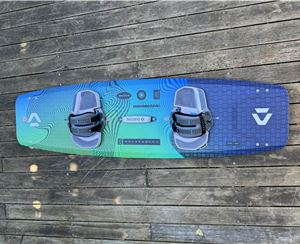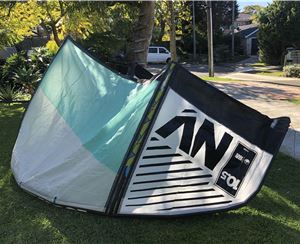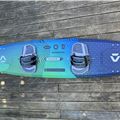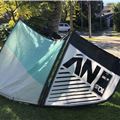What's the appeal: Kite Skating?

With the latest release from Alex Campat and the Kiteskate Lab, we thought some of you might be wondering why kiteboarders decide to ditch the straps, lace up a pair of old Nikes and try kiteskating.
If you’ve never heard of it, Kiteskating is like wakeskateing, which is like skateboarding but on water. Boards are sub 120cm long, with no footstraps and either griptape or full foam deck pads for traction. Symmetrical in design, wakeskates feature raised nose and tail sections much like a skateboard, and usually either two fins mounted centrally, one on each tip. Or no fins for obstacle action.
Riding a wakeskate isn’t hard, but there are a few challenges to master, which is one of the great appeals to this side of the sport (we’ll get to that later). Prepare to fall off lots, get ready to land on the board, have the board land on you, or simply not know where on earth the board is in the first place.
The Challenge
Without footstraps, kiteboarding quickly becomes less about the kite and all about the board. Every wave, chop or gust of wind can mean a face full of the salty stuff and that sucks. Learn to read the water and move with it.
Your wings get clipped. In the sense that you’ll be doing away with big boosts and backrolls. Kite skating is all about keeping it low and getting technical with the board. (Or you can just grab it and boost to the moon)
Windy days only. Due to their small size, kiteskates require more wind than your average twintip. So either upsize on the kite, or wait for the windy days.
Get ready for the questions. Most kiteboarders have never seen a wakeskate, let alone a kiteskate. Expect to get asked ‘what is THAT thing?’ a million times.
The Appeal
Wakeskating is challenging. If you’re bored with the usual twintip tricks and surfboard sessions then maybe it’s time to try wakeskating (or a raceboard).
You can wear shoes. If you’re one of those people who love shoes and the style options they present. Wakeskating is your sport. Shoes help you grip the board, and prevent nasty bruises on your feet from flip tricks.
Pretend to be your childhood hero. If you grew up on a skateboard then guess what? All those tricks can be done on the water, including kickflips. Yeah, kickflips.
Hitting rails is so much more satisfying. Without boots (or straps) hitting solid obstacles is not as hard as you think. Landing off the other end however isn’t as easy and stomping a landing on a skate is one of the best feelings ever.
They’re cheap. You can pick up a wakeskate and use it for kiteskating for around $200 new. Or you can buy one of the specialized ones from the kite companies for around $400.
Works well with others. A few mates on skates is a heap of fun. Laugh at the crashes, ‘yeeeeeew!’ the stomped tricks and play the great old game of S.K.A.T.E you learnt about on Tony Hawk video games.
Have we enticed you into trying kiteskating yet? If you need a little inspiration, check out the video of the boys here.
















